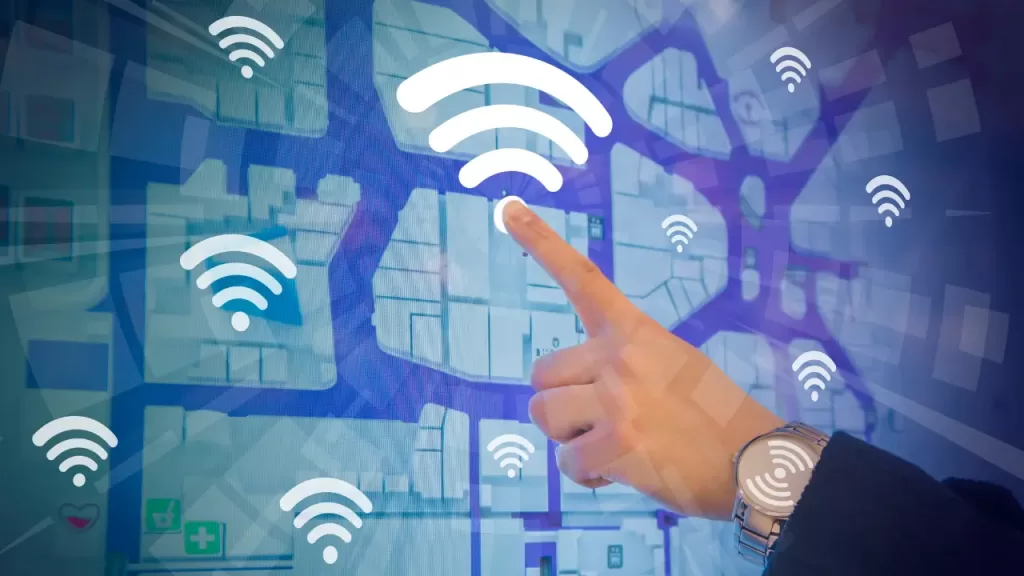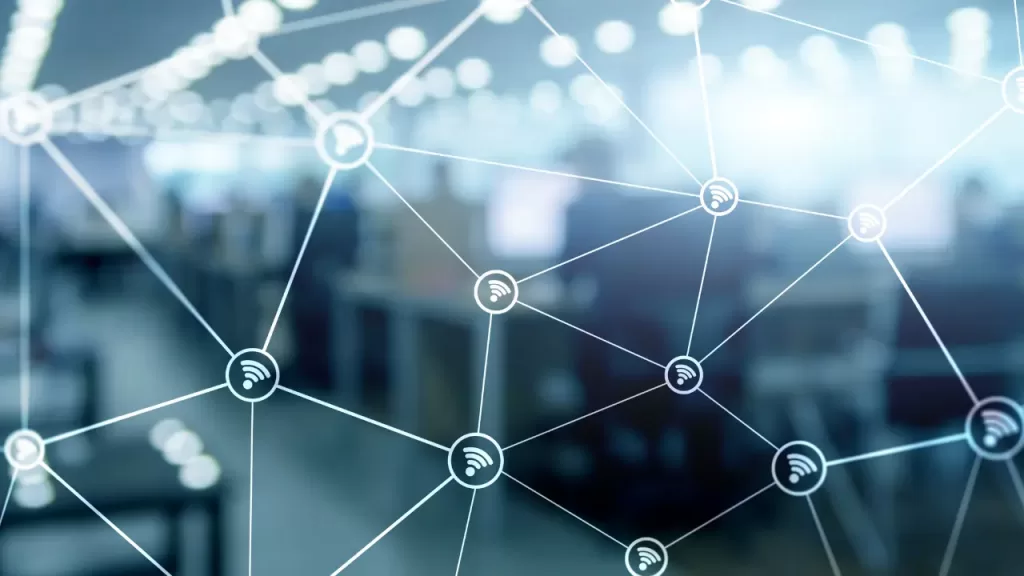Beamforming and MIMO: Aiming at the right direction
Table of Contents

The digitization of our businesses, homes and lives is an unstoppable phenomenon that has accelerated in recent years. Therefore, advances such as Beamforming and MIMO technologies seek to increase the capacity of wireless networks to serve the multiple devices we use every day.
As in any technological revolution, the infrastructure that makes it possible is the most important element of digitization. As much as we want to make the leap to digital and eliminate the analogue devices we still use, we can only do so if we have critical infrastructure such as the servers that support the cloud or, closer to the user, the WiFi network that allows Internet access to each one of the devices that make it up.
Larger and more complex WiFi networks require more advanced, efficient and optimized systems and technologies. Therefore, Beamforming has become a key ally when designing and implementing WiFi networks capable of serving multiple devices at the same time.
1. What is Beamforming technology?
Beamforming is a technology that focuses the signal emitted by a router or wireless access point in a specific direction.
Signals, not only WiFi signals but radio signals, for example, become weaker as they get farther apart and are obstructed by objects. Beamforming involves focusing a signal into a concentrated beam in a specific direction.
In the past, the WiFi signal was broadcast omnidirectionally. That is, in all directions equally. Beamforming technology, on the other hand, allows the antenna or antennas of the router or access point to emit the signal by focusing in a certain direction: the one where the devices are located. But how do they know where these devices are located?
Wireless routers and access points generally have two types of Beamforming: explicit and implicit.
1.1. Explicit Beamforming
This technology allows the network access point and the device to be connected to the network to exchange signals. Thus, both can know where the other is placed.
Knowing this information, the signal can be launched by choosing the shortest or easiest path between one point and the other. This will increase the connection’s speed and stability, reducing interference and noise.
1.2. Implicit Beamforming
This type has no bidirectional communication between the access point or router and the client. Instead, all the burden falls on the former. They must deliver the signal in the best possible way without the prior exchange of signals that allows the exchange of the positions of each device.
While explicit Beamforming requires the clients to have it, implicit Beamforming does not; it is sufficient for the router or access point to incorporate this technology. Thus, devices that predate the 802.11ac protocol, which extended this technology, can benefit from Beamforming. This is a key issue if the network comprises devices that continue to work optimally, even if they are already years old.
Therefore, Beamforming technology can increase the signal in the direction the devices connected to the network are located.
2. Directional Sensing: focusing data transmission
Let us take a closer look at how Beamforming technology can focus data transmission in the direction of the devices connected to the network. To do this, we must resort to the Directional Sensing technique.
As we pointed out when explaining the operation of explicit Beamforming, the key lies in the ability of the devices that incorporate it to communicate and, therefore, to locate themselves spatially and adjust their location in real-time.
But the information collected is limited to location and the quality of the signal received. Why is this important? Because if the received signal is weak, the transmitting antenna can strengthen the signal it sends in the direction in which the device is located and thus overcome any obstacles.
In addition, we must remember that not all network devices require the same data rate to function optimally.
If we are receiving WhatsApp with a cell phone, it will not require very intense data traffic. On the other hand, if we use a personal computer to make a video call for work purposes, we will need the signal to be as constant and stable as possible.
Thanks to directional sensing, we are leaving behind the omnidirectional signal, which is the same in all directions and for all devices. But on the other hand, we move on to a signal enriched with information and analysis to focus data transmission according to the characteristics of the network.

3. How it complements MIMO
MIMO technology allows the same signal to be sent from different antennas, which reduces interference and noise. But if it is complemented with Beamforming, the use of each antenna can be further optimized.
Imagine a 4X4 MIMO, i.e. composed of four transmitting antennas and four receiving antennas. Each of the transmitters points in a different direction. Before starting the link with the receiving device, all of them emit the signal with the same intensity. But once the link begins and the antennas receive information from the device to be connected to the network, the system will know where these devices are located and, therefore, which antenna or antennas are best placed to communicate with it.
Thus, the antenna’s signal strength in the right direction will be intensified. This will achieve two objectives:
- Optimizing the use of antennas and thus of MIMO technology. Distributing the sending of signals according to the arrangement of the devices that make up the WiFi network.
- Improving the quality and stability of the signal reaching each device.
Thus, implementing Beamforming and MIMO technologies allows us to maximize data transfer and guarantee the reliability of the connection.
3.1. The importance of analysis
In addition, using Beamforming and MIMO represents an important analytical leap. As noted above, beamforming technology is capable of analyzing the signals it receives. This fact, together with the diversity of antennas in MIMO technology, allows us to analyze each of the signals received by these antennas and measure the noise.
As with humans, having more information available helps the technology to make decisions. For example, based on the data collected from the signals, it is possible to decide which antenna to send the signal to a particular device to avoid distortion and interference.
Since the development of the 802.11ac protocol, WiFi devices with MIMO technology can support Beamforming to increase their data transmission rates.
4. Multipath: all roads lead to Rome
The combined use of Beamforming and MIMO technologies not only allows signals to be distributed via antennas according to the location of each client device. It also facilitates the implementation of multipath. In other words, sending several of the same signals over different paths, thereby strengthening the connection and avoiding interference.
Imagine a case where a device is far from the router, or there are too many obstacles between them. There needs to be more than just the antenna pointing in its direction to send the signal to ensure it is sufficiently optimal. On the other hand, if all the antennas are used to send the same signal using different paths, there is a better chance that the connection will be strengthened.
In addition, as we pointed out when we delved into MIMO technology, these advances can turn signal bounces into an asset since they mean that the signals use different paths to reach the receiver at different times. Combining spatial and temporal diversity.
Perhaps the popular saying is right when it says that “all roads lead to Rome”.
5. Transfer speed, reduction of interference and complex spaces
These technologies have numerous benefits for increasingly large and complex WiFi networks. Some of these have already been mentioned throughout this article, such as improved data transfer speed, reduced noise, reduced interference or the possibility of service outages.
More transmitting and receiving antennas and the ability to route signals bring with them the ability to design more advanced networks. And, above all, placing them in more complex physical spaces.
Suppose we have an office that is an open square space without walls or other physical barriers. In that case, it is easy for the signal emitted by the router or access point antennas to reach all the devices connected to the network optimally. It would be enough to place it in the centre of the square, and there would be no need for Beamforming technology; the signal could be distributed omnidirectionally.
The problem is that most office premises, businesses and homes do not have such simple spatial characteristics. Instead, signals often have to overcome walls, doors, glass or simply meters of distance.
Beamforming technology shows its full potential to improve the connection of devices located at an average distance from the router or access point. Those near the router or access point receive an optimal signal with the omnidirectional model. And the distance will still hinder those extremely far away, even if the signal is focused in the right direction.

6. Cutting-edge technologies for increasingly complex networks
Beamforming and MIMO technologies are, therefore, key allies when it comes to planning a network that can meet our growing Internet demands and incorporating more and more digital devices with different needs and located in different places.
TVs don’t usually move around in a home, nor do computers in an office. But a laptop may be used in different rooms, and cell phones, which have become almost an extension of ourselves, may need to be connected from the most remote places. Likewise, not all devices require the same data transfer. And their demands vary depending on the actions we carry out with them.
If our needs are complex, our WiFi network must also be complex, so it is essential to analyze it to optimize it.
7. Acrylic WiFi Heatmaps: network analysis and optimization
The joint and complementary use of Beamforming and MIMO technologies facilitates the designing and implementation of more robust, efficient and intelligent WiFi networks.
However, more than having devices incorporating these technologies is needed, per se, for the WiFi network to be fully optimized. Innovation is only useful if it is used strategically.
7.1. Planning WiFi networks
Acrylic WiFi Heatmaps is a tool for designing, planning and analyzing WiFi networks, thus making the most of the resources available.
The program allows you to draw the walls, ceilings and constructive elements of the space. Then, select the different materials with which they are made. Next, stipulate the different access points, positions, orientations and characteristics. And thus obtain a heat map of the WiFi coverage.
This software can analyze the impact of having routers and access points equipped with Beamforming and MIMO technologies and the effect on the connection generated by the fact that client devices also have them.
The level of detail in the network simulation is extraordinary. As is the analytical capability of the program.
Depending on the devices and our usual use, we can opt for a particular type of access point and orient them in the most optimal way to meet the needs of devices and users.
7.2. Exploiting the potential of Beamforming
With Acrylic WiFi Heatmaps, it is possible to exploit the full potential of Beamforming and MIMO technologies and ensure optimal coverage throughout the entire space, whether it is a home, a public building or a work office.
In conclusion, as the number of digital devices and the tasks we perform on the Internet has increased, WiFi networks’ challenges have grown exponentially. Therefore, technologies such as Beamforming and MIMO are essential to design efficient networks that meet all the data needs of devices and users.
Likewise, tools such as Acrylic WiFi Heatmaps make it possible to analyze space to set up a network that fits its physical characteristics. Or optimize an existing network, considering both the client devices and the functionalities of the routers or access points.
In any case, innovation and analysis are key to making the most of the digitalization of our lives.
